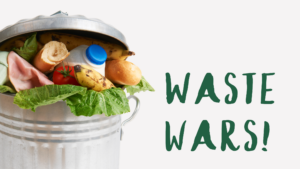Are you running out of ideas for how to get your kids interested in vegies? Don’t worry, you’re not alone. Sarah Dwyer, a mother of three and an experienced public health consultant, is here to help with a fresh and practical idea all the way from Belgium.
We all know that we should all be eating more vegetables. Fruits and vegetables are generally lumped together and yes both are deemed healthy but with the nutritional guidelines recommending 4-5 serves of veg and 1-2 serves of fruit per day for children[i], it’s can be a challenge to get the kids (and sometimes ourselves!) to choose the vegie sticks over the sweeter watermelon and strawberries. So, it probably doesn’t come as a surprise that Australian kids aren’t meeting the dietary recommendations for vegetables. In 2014–15, although 68% of children ate enough serves of fruit, only 5% ate the suggested serves of veg [ii].
The other aspect to all of this is the availability of vegetables. The World Health Organization (WHO) recommends that on average we should all eat a minimum of 400 grams of fruits and vegetables each day. And yet the figures show that eating enough vegetables is a concern not just in Australia but all around the world. Previous studies have suggested that increasing consumption to the recommended 5 servings per day would improve health outcomes and wellbeing both mentally, physically, and socially. But here is the catch – globally the availability of fresh foods is not enough to make sure that everyone has access to the amounts required to meet these recommended levels. Only 81 countries worldwide meet the WHO’s minimum recommendation which represents about 55% of the global population. That means a lot of people are living in countries with not enough supply of fresh produce. The good news is that we, here in Australia, are supplying more than we used to.[iii]
So, I think it’s time we focused on how we can get these amazing vitamin and mineral pocket rockets (aka vegetables) into our kids more frequently! But how?
One ingenious idea that I have stumbled upon comes from the Belgium supermarket, Delhaize. They launched a marketing campaign to encourage kids to eat healthier called ‘Magical Vegetables’. The campaign changed the names and packaging of 12 different types of vegetables with the end goal being to get kids to try them. Carrots for example became ‘orange rockets’, capsicums were ‘treasure boxes’ and tomatoes ‘clown noses’.
The feedback was that both kids and parents loved it. One parent remarked that their kids began to see vegetables in a more playful way, in turn making them more appealing. And the kids themselves saw vegetables in a humorous and funny way – making them more likely to take a bite and try the ’Magic Vegetables’. The sales also reflected the success of the campaign with 2 million of the 12 featured vegetables being sold in the first 2 weeks, translating into a whopping 151% sales increase![iv]
Such a simple idea, yet such an effective one. These results speak for themselves, kids are more likely to eat food if it’s marketed in a fun and engaging way. This shouldn’t be a surprise however because processed food companies have been using this fact for years.
Ideally, we would want more supermarkets and fresh food distributors to adopt and support public awareness campaigns like this to sell their fresh fruit and veg. But if history tells us anything, we might be waiting for a while.
In the meantime, this idea can be a good starting point if you’re looking to try a new way to get your kids excited about veg. It’s something that we can all start implementing right now at home. Let’s start calling carrots ‘orange rockets’ and maybe the humble leek a ‘witches’ broomstick’ (or whatever fun nicknames you can come up with) and see if it changes the variety of vegetables that our kids eat. Hopefully, it has a flow on effect and changes their requests for what to pop into the shopping trolley on your next trip to the supermarket.
[i] Nutrition Australia, Australian Dietary Guidelines: Recommended daily intakes, https://nutritionaustralia.org/fact-sheets/australian-dietary-guidelines-recommended-daily-intakes/ Accessed 22/7/20.
[ii] Australian Institute of Health and Welfare. Australia’s Health 2018, Publication Release Date: 20 Jun 2018, https://www.aihw.gov.au/reports/australias-health/australias-health-2018/contents/indicators-of-australias-health/fruit-and-vegetable-intake Accessed 22/7/20.
[iii] CSIRO, We don’t grow (or eat) enough fruits and veggies, July 18th 2019, https://research.csiro.au/foodglobalsecurity/we-dont-grow-or-eat-enough-fruit-and-veggies/ Accessed 22/7/20.
[iv] Delhaize – Magic Vegetables, May 25th 2018, https://www.youtube.com/watch?v=AegiBVfUYFI&time_continue=116&feature=emb_logo&app=desktop Accessed 22/7/20.





